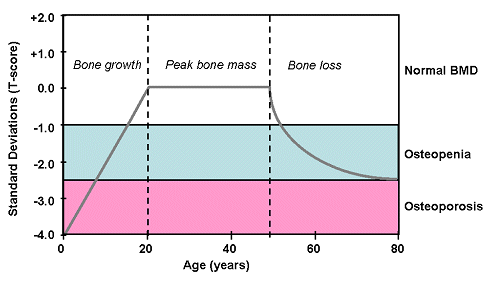Osteoporosis
What is Osteoporosis?
Osteoporosis is decreased density of normal bone mass, often referred to as “thinning of bone” or “porous bones”. It causes bones to become so porous and fragile that they break very easily.
Who is at risk?
Osteoporosis is a disease which effects people of all ages, particularly after the age of fifty. One in 2 women, and 1 in 5 men over the age of 50 in the UK will suffer fractures, commonly of the wrist, spine and hip as a result of osteoporosis. It often remains undetected until the first fracture. In women there is also a significant decrease of bone mass in the immediate postmenopausal period.
Additional Risk Factors
Breaking bones because of osteoporosis will also be greater if you have additional risk factors such as
- Family history of osteoporosis
- An early menopause or hysterectomy before the age of 45 years
- Smoking
- Drink heavily
- Women who are underweight, who over-diet, or over-exercise
- People who take corticosteroids (for conditions such as asthma or arthritis)
Bone Density Scanning
Bone density is the quantity of bone that, when measured gives an indication of the strength of bone. With the development of bone densitometry (the measurement of bone density) it is now possible to assess an individual’s bone density. This means Osteoporosis can now be diagnosed prior to bones breaking, thus giving individuals the chance to adopt lifestyle changes and take treatments. Ultrasound Bone density scanning is available at Glen house- Please call on 02891853343 and we would be happy to arrange your appointment
Dual x-ray absorptiometry (DXA)
DXA scanning is a simple X ray test to assess the strength of bones. The DXA machines scan some bones in the lower spine and hip. These are the two main areas at risk from osteoporotic fractures, although the heel and forearm can also be assessed. The scan will up to 10-20 minutes and is painless. The radiation dose used is less than one tenth the dose used for a chest x-ray.

The scan produces a printout which compares your bone density to that of healthy adults with average bone density. This difference is then calculated and expressed in terms of standard deviations (SD) and you are given a T score.
If the T score is between
0 and -1SD this is considered within normal range
-1 and -2.5SD this is termed osteopenia
Below -2.5SD this is classed as osteoporosis
Prevention and Treatment of Osteoporosis
The primary goal of treatment is to reduce the risk of fracture
Three mainstays of treatment are
- Exercise - weigh bearing exercises such as walking, dancing or skipping
- Diet - Calcium enriched diet
- Medication - Calcium and Vitamin D supplements
- HRT - Women should consider taking Hormone Replacement Therapy to stop bone loss of the menopause
|

